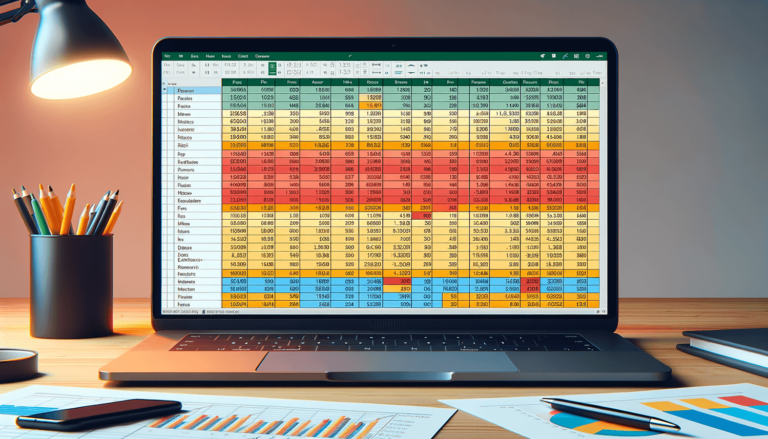

Are you tired of constantly referencing cells or ranges by their cell references in Excel? Naming ranges in Excel can make your formulas more readable and easier to understand. Additionally, it can save you time by reducing the need to scroll through long spreadsheets. In this blog post, we will go over exactly how to name a range in Excel, step-by-step. Whether you’re a beginner or a seasoned Excel user, this guide will provide you with the knowledge to effectively name ranges in your spreadsheets.
The first step in naming a range in Excel is to select the range you want to name. This can be a single cell, a range of cells, or even an entire column or row. Once you have your range selected, navigate to the “Formulas” tab on the ribbon at the top of your screen.

Next, click on the “Define Name” button, located in the “Defined Names” group within the “Formulas” tab. If you’re a keyboard shortcut wizard, you can use the shortcut, Ctrl + F3, to access this button directly.

Once you’ve clicked the “Define Name” button, a “New Name” dialog box will appear. In this box, you can type in the name you want to give to your selected range. Names can be up to 255 characters long, can include letters, numbers, and underscores, and cannot include spaces or special characters.

After you’ve typed in your desired name, click the “OK” button to save your named range. To see the name of the range you just created, click into the “Name Box” located to the left of the formula bar. The name of your range will appear in the box.

If you need to rename or delete a named range, you can do so by navigating back to the “Define Name” button in the “Formulas” tab. This time, instead of creating a new name, double-click on an existing name to edit it or choose a name and click the “Delete” button to remove it.
There you have it, a quick and easy way to name a range in Excel. By following these simple steps, you can make your Excel formulas and functions more readable and reduce the need to constantly reference cells by their cell references. Happy spreadsheet-ing!
Before we wrap up, here are a few best practices to keep in mind when it comes to naming ranges in Excel:
Now that you know how to name a range in Excel, how do you use that range in a formula? It’s simple – instead of typing the cell reference, simply type the name you assigned to the range. For example, if you named a range “SalesData” that contains data in cells A1 through A10, you could use the following formula to calculate the sum of those cells:
=SUM(SalesData)
You can also use named ranges in Excel charts to make them more informative and dynamic. To do this, create your chart as you normally would, but instead of typing a cell range for the chart data, type the name of the range you created. This makes it easier to update or modify your chart later on, as you can simply update the named range and the chart will automatically update to reflect the changes.
By naming ranges in Excel, you can make your formulas and charts more readable and easier to navigate. It also saves you time and reduces the likelihood of errors in your data. Keep these best practices in mind and start using named ranges in your Excel spreadsheets today!
Here are some frequently asked questions when it comes to naming ranges in Excel:
Yes, you can create a name for a cell or range of cells that already has a cell reference. This can make your formulas and functions more readable, especially for larger spreadsheets.
To edit or delete a named range, simply go back to the “Define Name” button in the “Formulas” tab and choose the named range you want to edit or delete. Double-click on the name to edit it or select the name and click the “Delete” button to remove it.
Yes, you can use named ranges in formulas, which can make your formulas more readable and easier to understand. Instead of typing the cell reference, simply type the name you assigned to the range.
Yes, you can use named ranges in charts, which can make it easier to update or modify your chart later on. Instead of typing a cell range for the chart data, type the name of the range you created.
Yes, a named range can refer to non-contiguous cells. Simply select all of the cells you want to include in your named range while holding down the Ctrl key, and then follow the steps for naming the range as usual.
Explore the world of Microsoft PowerPoint with LearnPowerpoint.io, where we provide tailored tutorials and valuable tips to transform your presentation skills and clarify PowerPoint for enthusiasts and professionals alike.

Your ultimate guide to mastering Microsoft Word! Dive into our extensive collection of tutorials and tips designed to make Word simple and effective for users of all skill levels.

Boost your brand's online presence with Resultris Content Marketing Subscriptions. Enjoy high-quality, on-demand content marketing services to grow your business.
